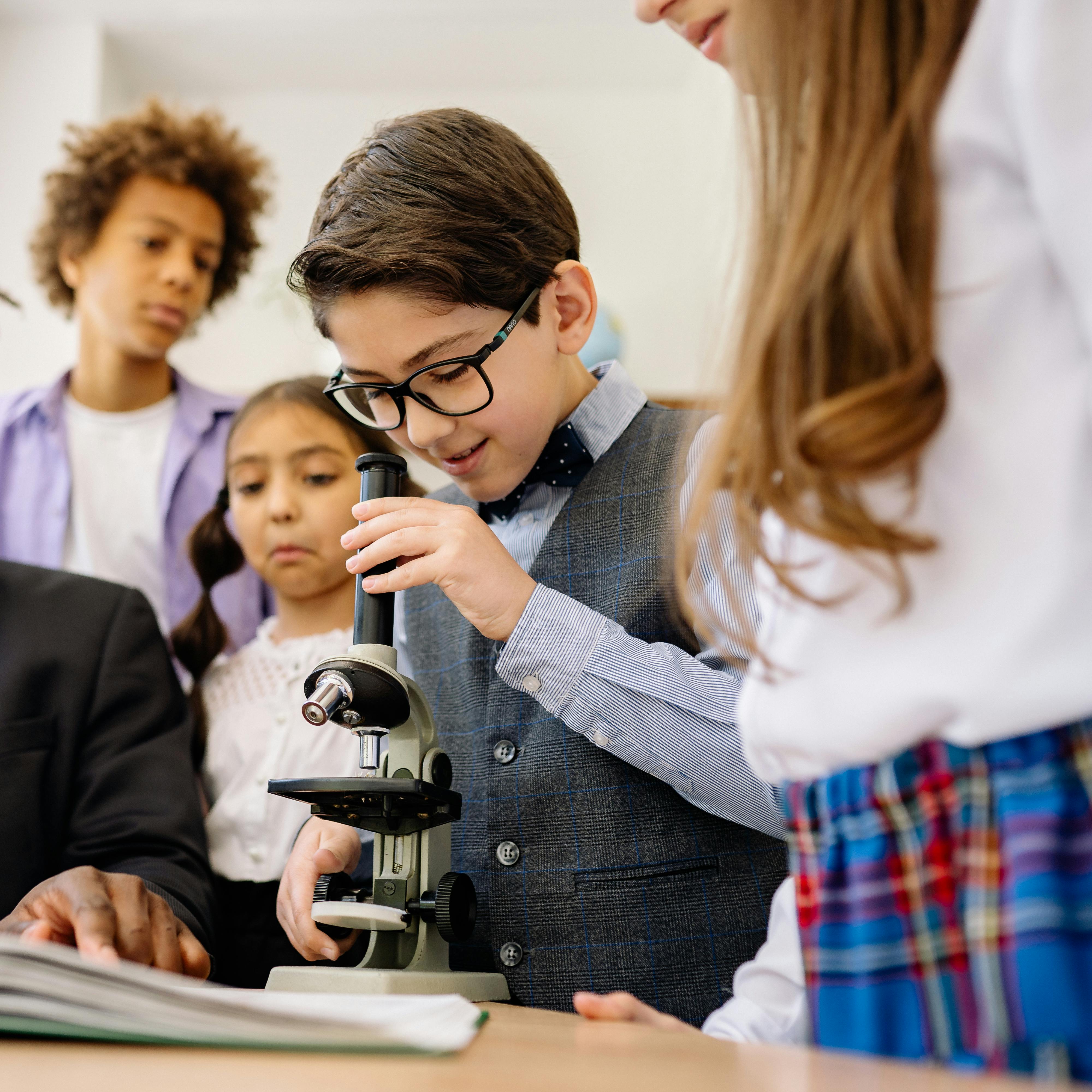To give students a real, in-depth education and prepare them for the world today, teachers need to guide students to explore and experience hands-on learning with all that Maker Education, STEM, STEAM and other project based learning approaches have to offer.
When you’re in the thick of it, though, the buzzwords can be overwhelming. You need a guide with the terms and definitions spelled out.
Maybe you’ve asked yourself the following:
What is the Maker Education movement? The place of STEM in education?
Also, what are the benefits of Makerspaces in K-12 education? What about design thinking in the classroom? Defining the buzzwords can help answer these types of questions.
The words you use to define your Maker Education movement are important since they create the mindsets that students will engage in. Here at WhyMaker, we recognize the umbrella of Maker Ed as an all-encompassing term and use it frequently, along with STEM education. If you need to choose one term, choose wisely—it is an important choice as you grow through the Maker Ed process.
That being said, definitions oftentimes create artificial silos, which is what this whole Maker Education movement is trying to avoid. It’s best to not lock yourself to one term. Rather, use them all when they are appropriate.
STEM, Maker Education, and Other Hands-On Education Terms
The words listed below define common buzzwords in the Maker Ed movement space. The definitions are to provide clarity when you are identifying your work.
Constructivism – a learning theory originally coined by Piaget and redefined by Seymour Papert as Constructionism. Papert describes how learners engage in conversations that lead to self-directed learning and the construction of new knowledge. This concept is the underlying foundation of Maker Ed, allowing children to explore and make sense of their experience by optimizing their interaction with the world. Learn more here.
Design – adding specific elements to a project or piece of work that show detail, thought, care, and purpose.
Designer – one who creates a project or piece of work with detail and purpose.
Design Thinking – a problem-solving process for coming up with the best solution to the problem.
Designing 4 Humans – a pedagogical approach to design thinking that helps teachers and students develop the best possible solutions to real-world problems in a way that is accessible to all students. Explore our Designing for Humans blog post to learn how to guide students through empathy-driven design, and use the Designing for Humans Project Planner to bring these ideas to life in your classroom.
Educational Technology – computer applications that help students learn by allowing them to create or ingest content.
Engineering – the study and application of how to build on our planet.
Hacking – taking things apart to learn how they work and putting them back together again.
Hacker – one who takes things apart to learn how they work and puts them back together again, or one who breaks into something (e.g., code of a computer program) to see its faults in an effort to cause harm to someone else.
Instructional Technology – computer applications that teachers use to give instruction to students.
Maker – one who loves the process of building and creating with their hands (creating a solution with tools, materials, and technologies) and demonstrates character strengths of curiosity, creativity, and grit.
Maker Education – the overarching integration of constructing and fabricating solutions to real-world, content-based problems using different tools, technologies and the design thinking process.
Makerspace – a physical space where materials and tools are stored and accessible to everyone; can be as big as a room or as small as a box. Good Makerspaces have worktables and access to any tool, material and technology the Maker might need. Need help planning your Makerspace? Start with our blog, Create an Exciting Makerspace for Teaching STEM, for inspiration and practical guidance.
Project Based Learning (PBL) – an approach that guides teachers to lead students through an independent process of inquiring, planning, and solving problems, and the only way Maker Education projects thrive. See our STEM and Maker Ed Project Planner to help you create the best project-based learning experience for your students.
Reverse Engineering – taking apart a functioning machine or product in a strategic way in order to learn how it works. (WhyMaker students call it “smashing time!”)
Science – the study of the natural world (the opposite of technology).
STEM – the transdisciplinary educational approach of using project-based learning to connect Science, Technology, Engineering, and Math.
STEAM – the transdisciplinary educational approach of using project-based learning to highlight each content area (Science, Technology, Engineering, Art, and Math) during the learning process.
Technology Education – the study of the human-made world, including tools, materials, and knowledge to solve the wants and needs of people.
Tinkerer – one who spends their time taking apart things, exploring new tools and materials in an unstructured manner.
Tinkering – spending time playing around with different tools and projects.
Explore more insights on STEM and Maker Education on our WhyMaker blog page.







